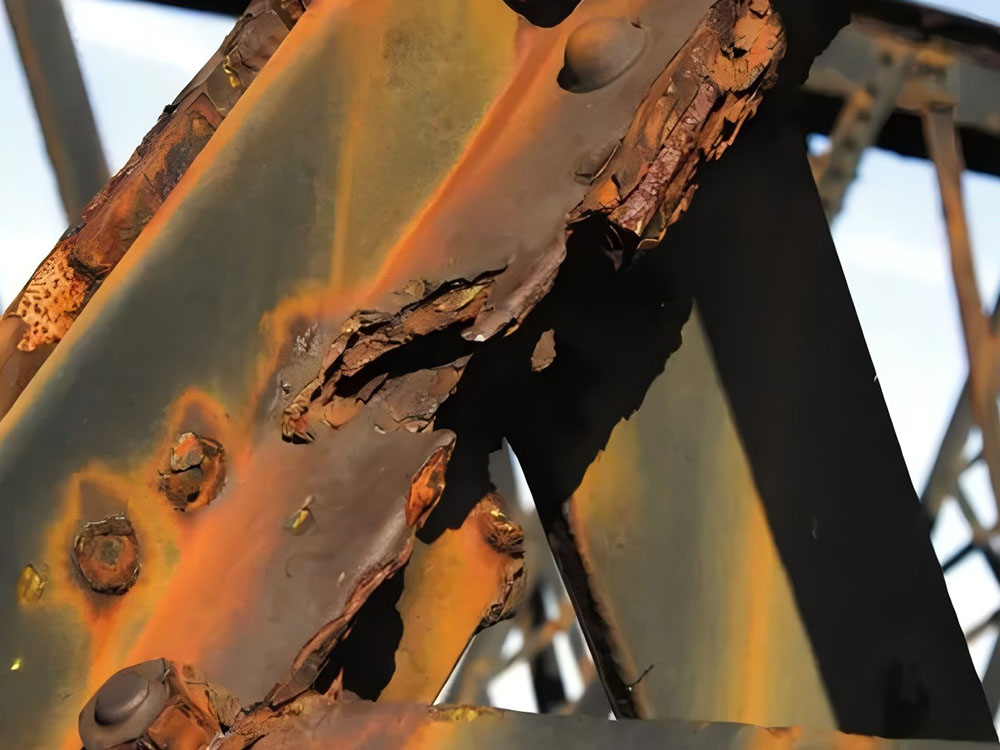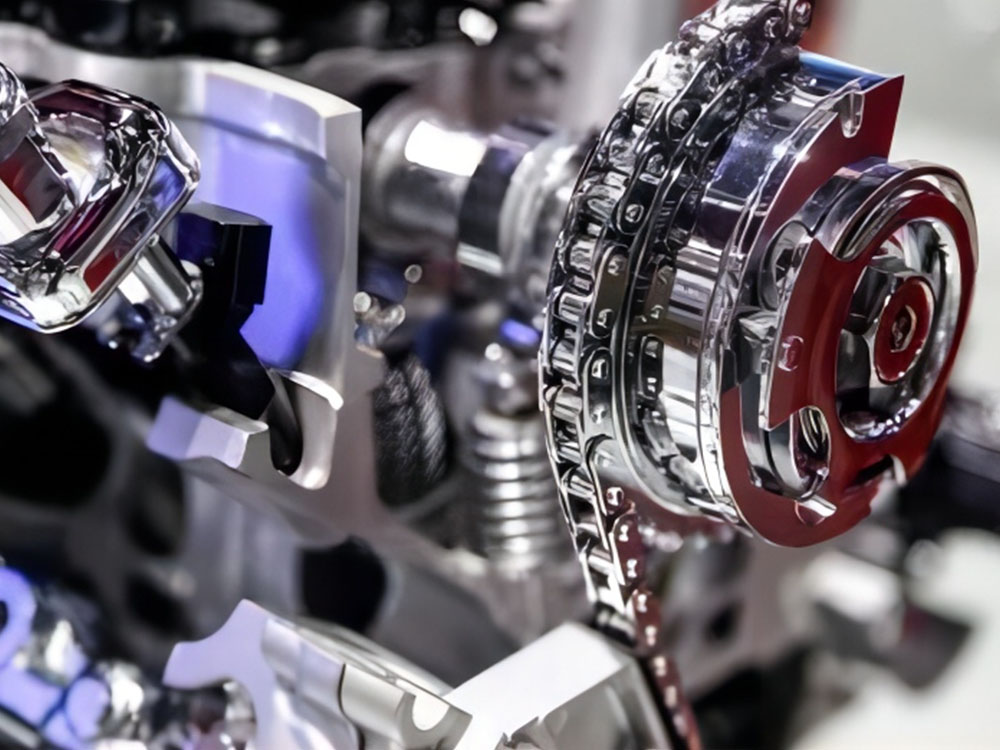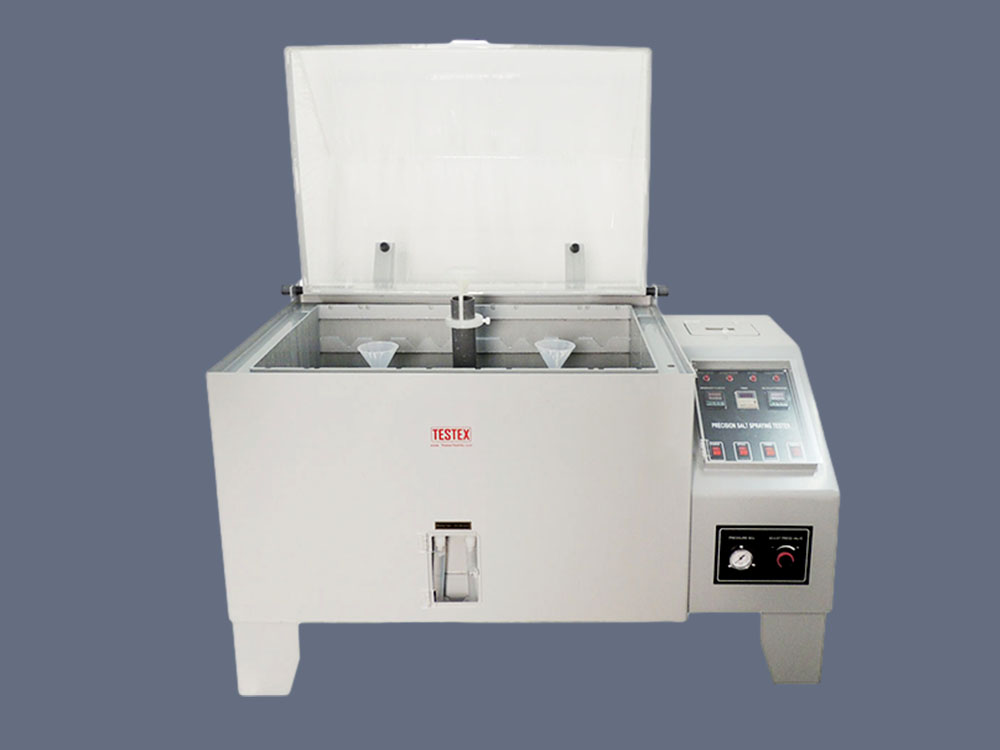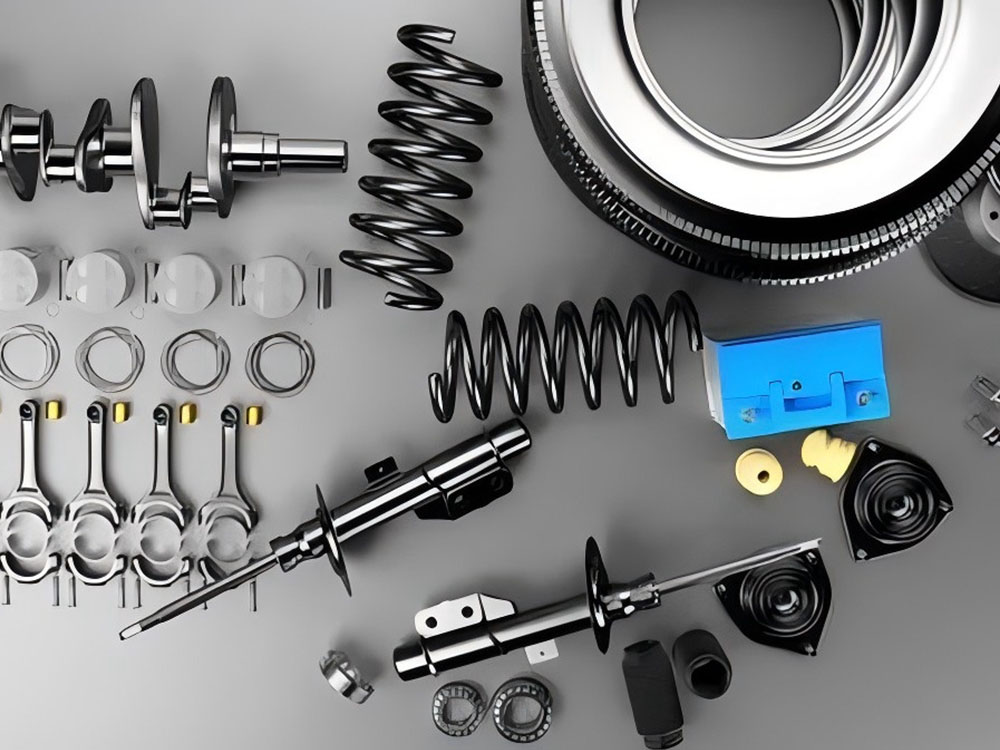1 Terminology
1.1 General surface corrosion
Uniform removal of material from the entire material-aggressive medium contact surface. This is a very common type of corrosion. Common types are sheet corrosion and surface corrosion.
1.2 Pitting corrosion (pore corrosion)
The erosion of a limited localised area by a corrosive medium which penetrates into the material to form holes or pits, the depth of which is almost always greater than its diameter. The surface outside the pitting corrosion zone removes virtually no metal. Pitting corrosion is often caused by halide ions.
1.3 Crevice Corrosion
Concentration differences in the corrosive medium, such as those caused by long oxygen diffusion channels, mainly cause corrosion in narrow crevices. This type of corrosion creates a potential difference between the ends of the crevice, leading to increased corrosion in poorly ventilated areas.
1.4 Dezincification
Zinc is selectively dissolved from the brass, leaving a porous purple copper organisation. The processes of nickel and aluminium removal are similar.
1.5 Iron rust
Formation of ortho-ferrous oxide and hydroxide corrosion products on iron and steel.
1.6 Loss of lustre
The lustre of the surface of the object becomes less.
2 Salt spray corrosion mechanism and corrosion capacity
2.1 Salt spray corrosion mechanism
The mechanism for salt spray corrosion of products operates in an electrochemical manner, based on the corrosion of the primary cell. The corrosion process proceeds as follows: the anodic process corrodes the metal with a more negative potential serving as the anode, leading to the oxidation reaction. The anodic dissolution process of the metal consists of at least the following consecutive steps:
Metal atoms leave the lattice transformed into surface adsorbed atoms: Me lattice → Me adsorption.
Potential difference leads to oxidation of the metal with the reaction : Me → Men+ → ne-. An equal number of electrons are released. The resulting metal ions can either dissolve into the electrolyte or precipitate on the metal by reacting with components of the attacking medium.
The process at the anode can continue until the cathode exhausts the electrons it generates. In neutral or alkaline media, the cathode reduces O2 +2H2O+4e- to hydroxyl ions by reacting to form 4OH-. In acidic media, hydrogen ions reduce by forming free hydrogen, which escapes as a gas, while hydroxyl ions react with metal ions.
The three elements of salt spray corrosion are water, oxygen and ions. The coating is a kind of polymer film, which can differently retard the passage of the above three elements and play an anti-corrosion role. In general, when the concentration of salt in the water is 0.4 mol/L or higher, sodium and chloride ions can diffuse through the coating film. In the case of spray salt spray, we cannot suppress the above anode and cathode reaction.
2.2 Potential Order of Metals
As a general reference, if the reaction of a metal is not affected by complex reactions or secondary reactions such as the formation of a protective layer, the relationship between potential and corrosion polarisation in the absence of an applied voltage is as follows: Very base metals (potentials below -0.5V) such as Na, Mg, Be, Al, Ti and Fe will corrode in neutral aqueous solutions even in the absence of oxygen.
Base metals (potential between -0.5∽0V), such as Cd, Co, Ni, Sn and Pb, can corrode within a neutral aqueous solution in the presence of oxygen, and will corrode in acids releasing hydrogen even in the absence of oxygen.
Semi-precious metals (potential between 0 and +0.7V), such as Cu, Hg and Ag, can corrode in all solutions only in the presence of oxygen. Precious metals (potential above +0.7V), such as Pd, Pt and Au, are generally stable.
3 Cyclic corrosion test methods
Salt spray test has gone through the process from constant salt spray, spray – dry test, cyclic corrosion test to salt spray UV cyclic exposure test. Salt spray ultraviolet cyclic exposure test compared with other test methods, the introduction of ultraviolet light and condensation on the sample or the material of the influence of the parameter, a more realistic representation of the natural environment exposure of ultraviolet light and condensation on the sample machine material.
Outdoor corrosion of metal parts is often affected by a combination of factors, which often do not exist in isolation. Therefore, it is difficult to simulate an artificial environment test can fully meet the actual outdoor use of the environment. Although the constant salt spray test is generally recognized from the results of previous salt spray tests and considered as the basic test for corrosion testing, it has no relevance to actual natural corrosion testing. Cyclic corrosion test (CCT) is mainly used in the automotive industry, in the constant salt spray test on the basis of the introduction of high temperature, humidity, low temperature, dry and other parameters, as far as possible, taking into account the natural environment of the many conditions of the factors, in order to achieve a higher correlation with the natural environment of the test results. Therefore, this paper mainly introduces the relevant content of the cyclic corrosion test.
3.1 Cyclic corrosion test exposure conditions
Various types of cyclic corrosion testing is applied to one or all of the following conditions.
3.1.1 Room temperature conditions
For CCT testing purposes, we define a room temperature environment as laboratory room temperature conditions. Room temperature conditions can often change the properties of a test sample very slowly. For example, after a salt spray, leave a sample at room temperature for two hours. The sample actually undergoes a slow drying process at a specific temperature and humidity. In general, ‘room temperature conditions’ are free of corrosive vapours and gases. Gas flow is minimal or nonexistent, maintaining a temperature of 25±5°C and a relative humidity of 50% or less, and it is crucial to monitor and record laboratory conditions for each test.
3.1.2 Chamber Conditions
Non-room temperature conditions usually refer to the exposure conditions inside the test chamber. To transition between different non-room temperature conditions, one can manually move the test specimen from one test chamber to another or cycle from one condition to another in a fully automated test chamber. Each test should monitor temperature and relative humidity. If possible, use an automatic control system. Temperature deviations should be accurate to ±3°C or less.
3.1.3 Salt Spray (Shower) Conditions
Salt spray conditions can be realised in a salt spray test chamber or manually under laboratory conditions. Nozzles can spray a misty salt solution. In addition to NaCl (sodium chloride), electrolytes that contain other chemicals can be used to simulate acid rain or other industrial corrosion.
3.1.4 Humid Conditions
CCT test procedures typically require high humidity conditions. The ASTM D224711 test standard specifies relative humidity requirements of 95-100%. You can achieve this by using a constant temperature and humidity chamber or by using an automatic cycling chamber.
3.1.5 Drying Conditions
You can achieve drying conditions in an open laboratory or in a test chamber. Sufficient air circulation in the space prevents stratification and allows for drying the sample. The definition of ‘drying’ is complex and there is some debate as to whether it refers to surface drying or complete drying of the sample. As product corrosion penetrates, the time required for complete drying of the sample may increase.
3.1.6 Immersion corrosion conditions
This condition usually consists of a specific concentration of electrolyte, typically 5 per cent, with a pH of 4 to 8, and usually at a specific temperature. During use, the solution may become contaminated and you should replace it periodically.
3.1.7 Submerged water conditions
Use distilled or deionized water. You can consult the ASTM D1193 standard for water quality requirements. You should make containers for immersion out of plastic or other inert materials. The pH of the immersion solution should be between 6 and 8, the temperature should be 24±3 °C and the conductivity should be less than 50 mohm/cm at 25 °C.
3.2 Sample preparation
Colour coated board salt spray test sample preparation mainly has a flat sample, scratch sample, cut sample and so on.
3.3 Precautions for exposure test
In addition to the general constant salt spray test precautions, CCT exposure to a variety of test conditions to the test results of repeatability and reproducibility of more potential problems.
3.3.1 Test Chamber Loading
Fully loaded test chambers typically require a longer time for the temperature transition to occur than lightly loaded test chambers. To ensure air circulation during testing, the test chamber should be evenly loaded.
3.3.2 Changeover (Ramp) Time
Whether the test chamber is manually operated or fully automated, changeover time is a factor that affects test results. In manual operation, the changeover time is the time required to move the sample from one environment or exposure condition to another. In a fully automated chamber, the changeover time is the time it takes for the equipment to change the exposure conditions inside the chamber. Automated gives more predictable and repeatable transitions than manual exposures. The effect of changeover time on test results still needs to be further investigated. Therefore, it is important to monitor and record the changeover time as much as possible. The changeover time varies according to the following conditions:
– Changes in room temperature conditions
– Changes in manual procedures
– Type of instrument used
– Load on the test chamber
3.3.3 Salt spray deposition and uniformity
In conventional salt spray testing, the uniformity of the spray is usually detected by collecting salt spray at different locations within the chamber. Unlike the constant salt spray test, you cannot measure the CCT salt spray deposition rate during the test operation. This is due to the fact that the vast majority of CCT exposures specify a relatively short salt spray cycle time. Therefore, in order to measure the uniformity of salt spray deposition in a CCT test setup, it is necessary to collect salt spray deposition during continuous spraying for up to 16 hours. 3.3.4 Test Interruptions
When we must interrupt testing, we place the samples in a non-corrosive condition as much as we can. We record all interruptions and sample handling.
3.4 Summary of Cyclic Corrosion Test Standards for Various Automotive Companies
The automotive industry is technologically advanced in cyclic corrosion test methods. Therefore, automotive testing applies most of the CCT tests.
3.4.1 General Motors standard GM 9540P/B in the USA
This is one of the preferred CCT methods for automotive surface corrosion (top-coated or pre-painted sheet metal), as studied by the SAE ACAP Committee of the Society of Automotive Engineers (SAE) and the American Iron and Steel Institute (AISI) GM 9540P/B requires either a manual test on a 24-hour daily cycle or the use of an automated cyclic test chamber. When conducting manual testing, operators use a sprayer to mist the sample until it is completely wet. The part must be dry before spraying it. In the case of manual operation, the samples are only exposed to laboratory conditions during the weekend. An automated test setup can perform the exposure test in a single chamber.
GM 9540P/B exposure conditions include: electrolyte 0.9% NaCl, 0.1% CaCl2 & 0.25 NaHCO3 solution acidity pH between 6.0 and 8.0, test cycle of 80 test cycles (1,920 hrs.) The GM 9540P/B exposure test cycle is as follows.
8 hours salt spray, laboratory environment (25°C, 30 – 50 per cent relative humidity).
Eight hours humid (95 – 100% relative humidity)
8 hours dry (60°C, <30% RH)
This cycle repeats the above steps.
3.4.2 JASO M 609 (Japanese Automotive Industry Standard Organisation)
Japan is a large automobile producing country, especially Toyota Motor Corporation, which boasts that ‘wherever there is a road, there must be a Toyota car’, etc. They have conducted a variety of natural and artificial tests on automobile materials, including plastics, metals and paints, as well as automobile parts and even the entire automobile, and have obtained a large amount of data, which has effectively improved the performance of automobiles and promoted the development of the automobile industry as a whole. This has made it possible to improve automobile performance and promote the development of the automobile industry as a whole.
Japan has extensively researched automobile testing and established standards and specifications for test methods, including the test conditions of JASO M609 and Japan’s JIS standard for antirust coatings formulated in 1993. These standards require 60 hours of sunlight and climate fastness meter irradiation and a subsequent compound test with 28 cycles.
3.4.3 Volkswagen Standard PV1210, Germany
Volkswagen has developed a corrosion test method with dynamic stress. Without protective treatment, steel plates for automobiles undergo corrosion stress tests and develop a uniform layer of rust. It is now common for some automotive test manufacturers to apply a series of protective layers (e.g. phosphating, electrophoresis, topcoat or dip-plating) to these steel sheets. With such measures, the protective layer structure rarely cracks under static corrosive stresses, but external mechanical stresses, such as impact with gravel, can damage the protective layer all the way to the interior of the metal substrate. There are different electrochemical stress potentials in the bonding areas of the material, which can lead to contact corrosion when subjected to electrolyte (salt water). Mechanical stresses can cause damage to the insulation layer applied to prevent contact corrosion. Analyses have shown that in order to achieve realistic results in the corrosion test, one must apply mechanical stresses.
This paper describes a cyclic corrosion test in PV1210, with a test cycle of:
4h Salt spray test, reference DIN50021-SS, neutral salt spray test;
4h room temperature cooling, 23°C, 50% humidity, with reference to DIN50014-23/50-2, standard climatic requirements;
16h Hot and humid climate, (40 ± 3) °C.
100% humidity storage, see DIN 50017-KK.
After describing the following conditions of the product after 15, 30, 60, or 90 cycles:
Type of corrosion: coating corrosion or substrate corrosion;
Corrosion shape: surface corrosion or edge corrosion;
Time of appearance and development of corrosion.
For more environmental test chamber, Please visit: https://chiuventionclimatechamber.com
For more environmental test simulation programmes,environmental testing knowledge, instrument knowledge, and environmental testing laboratory knowledge, please contact us: [email protected]



